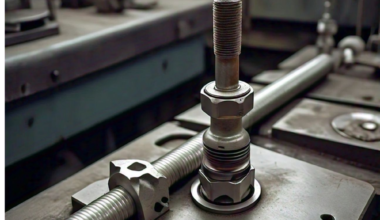Beneath the depths of your home, in its dimly lit and often overlooked underbelly, resides a space that evokes thoughts of cobwebs and creatures. Indeed, the crawlspace. While seemingly insignificant, this concealed enclave wields substantial influence over your household comfort and structural stability. Discover how to install a vapor barrier in a crawlspace to enhance your space’s protection and well-being.
Now, you may be wondering: what on earth is a vapor barrier? Well, think of it as superhero armor for your crawlspace! Designed to keep excess moisture at bay thus preventing costly damage to your flooring or foundations over time.
Dive into the world of DIY as we reveal the secrets of how to install a vapor barrier in a crawlspace.
Our blog post provides a step-by-step guide, complete with user-friendly tips that even Bob Villa would envy. Roll up your sleeves and get ready for DIY action down-under with expert guidance on installing a vapor barrier.

Assessing the Crawlspace for Vapor Barrier Installation
Before you begin installing a vapor barrier in your crawlspace, it’s important to assess the space and determine if it is suitable for this type of insulation.
Start by conducting a thorough inspection of the area. Look for any signs of moisture or water damage, such as dampness, mold growth, or rot. These issues must be addressed before proceeding with the installation.
Additionally, check for any existing insulation in the crawlspace. If there is already insulation present, you’ll need to decide whether it can coexist with a vapor barrier or if it needs to be removed.
Choosing the Right Type of Vapor Barrier
When selecting a vapor barrier for your crawlspace, several factors should be considered. The most common types of materials used include:
- polyethylene plastic sheeting
- foil-faced insulation boards
Polyethylene plastic sheeting is an inexpensive and easily accessible option that can effectively prevent moisture from seeping into your home. Then there are foil-faced insulation boards which offer enhanced thermal resistance and are more durable compared to plastic sheeting.
Consider factors such as cost, climate conditions, and personal preference when choosing between these options.
Preparation Steps Before Installing a Vapor Barrier
Proper preparation is crucial to ensure an effective installation process:
1. Clean the crawlspace: Remove any debris or loose dirt from the floor surface using brooms or vacuums.
2. Level uneven surfaces: Use gravel or sand to level out areas where there are noticeable slopes or indentations on the ground.
3. Check for cracks: Inspect all walls for cracks and seal them properly using caulk or spray foam.
4. Mend plumbing leaks: Address any active leaks by repairing or replacing the affected plumbing components.
By completing these preparatory steps, you’ll create a clean and even surface for laying down the vapor barrier.

Process of Laying Down the Vapor Barrier in Crawlspace
Now that your crawlspace is prepared, it’s time to install the vapor barrier. Follow these steps:
1. Measure and cut
Measure the dimensions of your crawlspace floor and walls precisely. Cut the vapor barrier material accordingly, leaving around 6-12 inches of excess on all sides for folding and securing purposes.
2. Create seams
If necessary, join multiple sections of the vapor barrier using a waterproof tape specifically designed for this purpose.
3. Lay out the material
Starting from one end of the crawlspace, unroll and lay down the vapor barrier across the entire floor area. Ensure it covers every inch without any gaps.
4. Fold up along walls
Fold up excess material along each wall to create a sealed boundary between ground-level moisture and surfaces above.
5. Secure with fasteners
Use appropriate fasteners such as staples or adhesive to secure both edges along each wall. Space them approximately every 12 inches for optimal stability.
6. Trim off excess material
Once everything is securely in place, trim off any remaining excess material using a utility knife or scissors.
Sealing and Securing the Vapor Barrier
To maximize its effectiveness, you need to seal and secure your newly installed vapor barrier properly:
1. Seal seams
Inspect all taped seams for proper adhesion. Apply additional tape if needed to ensure no gaps are present between sections.
2. Improve wall attachment
Consider attaching an additional layer of insulation onto exterior crawl space walls before sealing them with caulk or spray foam to enhance energy efficiency.
3. Protect against punctures/sharp objects
Be cautious when moving around in the crawlspace to prevent accidentally puncturing the vapor barrier. Clear any sharp objects or debris that could cause damage.

Considerations when Installing a Vapor Barrier around Obstacles in Crawlspace
Crawlspaces often have obstacles such as pipes, ductwork, and support beams. When installing the vapor barrier around these obstacles:
1. Pipe penetration: Cut slits in the vapor barrier material to fit it snugly around pipes, ensuring a tight seal.
2. Around support beams: Cut holes in the vapor barrier for support beams and ductwork openings and then securely attach it using tape or fasteners.
3. Covering multiple levels: In cases where there are multiple crawl spaces with different levels within the same property, be sure to properly connect and seal each section of the vapor barrier.
Maintaining and Checking your Installed Vapor Barrier Regularly
To ensure your crawlspace remains protected from moisture over time, regular maintenance is necessary:
1. Regular inspections
Periodically check your crawlspace for signs of water intrusion or damage. Look out for mold growth, dampness on surfaces, or any tears in the vapor barrier.
2. Repairing damages
If you notice any issues with your installed vapor barrier like tears or loose sections during inspections, promptly repair them using appropriate materials like specialized tape designed for this purpose.
3. Monitor humidity levels
Use a hygrometer to monitor humidity levels inside your crawlspace regularly. Maintain humidity below 60% to prevent condensation and potential moisture problems.
By following these steps and regularly maintaining your crawl space’s insulation system, you can effectively control moisture levels and reduce potential risks associated with excess humidity.
A Final Word
Installing a vapor barrier in a crawlspace is a crucial and relatively straightforward process that can have significant benefits for the overall health and longevity of a home.
By following the step-by-step guide provided, homeowners can effectively mitigate moisture-related issues, prevent mold and mildew growth, and improve energy efficiency. The installation process involves cleaning and preparing the crawlspace, carefully laying the vapor barrier, and securing it in place.
Also, regular maintenance and periodic inspections are recommended to ensure the barrier’s effectiveness. With proper installation and ongoing care, a vapor barrier can contribute to a healthier, more comfortable living environment and protect the structural integrity of the property in the long run.
FAQs On how to install a vapor barrier in a crawlspace
Q: What is a vapor barrier in a crawl space?
A: A vapor barrier in a crawl space is a material, usually a plastic sheeting, that is installed to prevent moisture from entering the crawl space.
Q: Why do I need a vapor barrier in my crawl space?
A: A vapor barrier in your crawl space is necessary to prevent moisture from the ground, which can lead to issues such as wood rot, mold growth, and high humidity levels.
Q: How do I install a crawl space vapor barrier?
A: To install a crawl space vapor barrier, you’ll need to clean the crawl space, measure and cut the plastic sheeting, secure it using double-sided butyl tape or other fasteners, and overlap the sheets to create a continuous seal.
Q: What type of plastic sheeting should I use for a crawl space vapor barrier?
A: It’s recommended to use a high-quality vapor barrier with a thickness of at least 6-mil. Avoid using thin plastic liners as they may tear easily.
Q: Do I need to encapsulate my crawl space along with installing a vapor barrier?
A: It is highly recommended to encapsulate your crawl space along with installing a vapor barrier. Crawl space encapsulation involves sealing the walls and floor of the crawl space to create a conditioned space that is completely separate from the outside.
Q: What are the benefits of crawl space encapsulation?
A: Crawl space encapsulation provides several benefits such as improved indoor air quality, prevention of wood rot and pest infestations, reduction in energy costs, and protection against moisture-related issues.
Q: Can I use a crawl space encapsulation system instead of a vapor barrier?
A: Yes, a crawl space encapsulation system includes a vapor barrier along with other components such as insulation, dehumidifiers, and sump pumps to ensure a complete solution for moisture control in the crawl space.
Q: How do I know if my crawl space needs a vapor barrier?
A: If you notice high moisture levels, standing water, musty smells, or damaged wood in your crawl space, it’s likely that a vapor barrier is needed to prevent further issues.
Q: Can I install a crawl space vapor barrier by myself, or do I need a professional installer?
A: Installing a crawl space vapor barrier can be a DIY project if you have the necessary skills and equipment. However, it is advised to hire a professional installer for best results and to ensure proper sealing and installation.
Q: Are there any regulations or guidelines for installing a crawl space vapor barrier?
A: While specific regulations may vary, it is recommended to follow the guidelines provided by the Department of Energy and local building codes when installing a crawl space vapor barrier.

